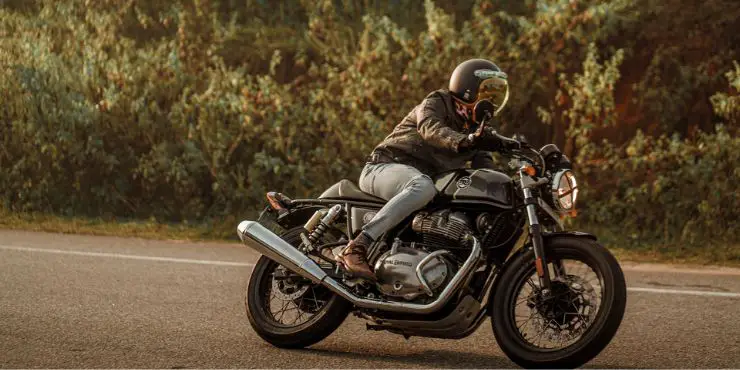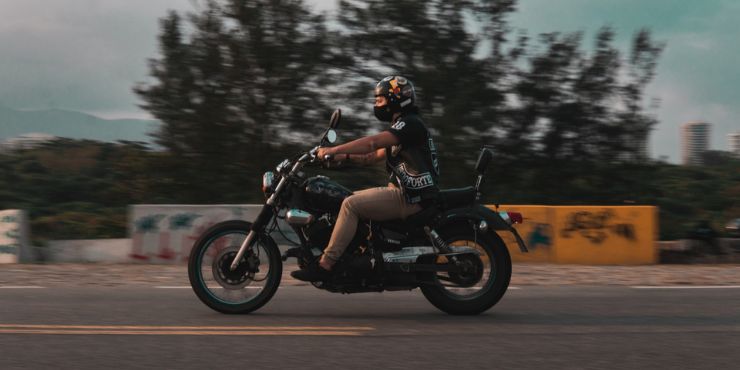Are you a beginner Harley-Davidson still learning to ride, but you don’t know how to shift properly? If yes, then this blog is the best place for you to be.
To shift a Harley-Davidson, pull the clutch lever, use your left foot to press the gear shifter into the desired gear, and then smoothly release the clutch while applying throttle. Continue shifting up and down as needed based on speed.
In this article, you will get to learn all about shifting on Harley-Davidson bikes, the basics of motorcycle shifting, how to shift a Harley-Davidson bike, and more. Stick around to get all the answers that you are looking for.
Gear Shifting System in a Harley-Davidson Motorcycle
Learning to ride a Harley-Davidson bike can be a challenging task, especially for beginners. You need to learn how to start the bike, drive it, steer it, and handle it safely. Undoubtedly, one of the most complicated aspects is learning how to shift gears.
If you already know how to drive a manual transmission vehicle, you might think that it’ll take you seconds to learn. However, shifting gears on a Harley-Davidson bike is slightly different than on an automobile. The controls and patterns vary, and they can often trip up even the most experienced bikers.
Before talking about shifting gears, you should first learn about the controls involved. On most motorcycles, shifting can be accomplished using three components – the clutch, the throttle, and the gear shift lever.
The clutch is the lever located at the front of the left handgrip. When the clutch lever gets pulled, it will disengage the engine from the rear wheel. When it gets released, the engine and the wheel will be actively connected via the transmission.
The throttle is present on the right side handgrip, where you hold to the handlebars. Rotating the handgrip in a backward position will increase the throttle, and returning it will close the throttle. In simple terms, this is how to control the bike’s acceleration.
Meanwhile, the gear shift lever is present near the driver’s left foot. Operating the gear shift lever while engaging the clutch shifts gears up or down.
This is one of the first things that trip people up who don’t know how to drive a manual transmission vehicle. While most automobile gears are arranged in a grid-shaped pattern, the shifting order on Harley-Davidson bikes is fixed. In other words, you cannot shift directly from the first to third gear. You’ve got no choice but to pass through the second gear on the way.
Most bikes have five gears, although there are a few sport bikes that go up to six. Unlike automobiles, there is no reverse gear here. If you want to back up, you should just push off the ground. Additionally, the “neutral” on a bike is located between the first and the second gear. When you are shifting up from the first gear, you will actually feel the transmission shift into neutral before going into the second. This is very different from a car, where you can simply shift from any gear directly into neutral.
The Basics of Gear Shifting in Harley-Davidson Bikes
Shifting is the process of switching your Harley-Davidson bike from one gear to another. Lower gears tend to have more torque, but they aren’t capable of achieving high speeds. Meanwhile, higher gears offer more top speed but offer very less torque. As a result, you need to start driving in first gear and then shift up as you accelerate.
To start learning the basics of gear shifting, you should begin by putting your motorcycle in neutral and then start the engine. On most modern bikes, there will be a neutral light indicator on the dash that lights up when you are in neutral. On old models, you need to feel it out.

Once your bike has started, you need to disengage the clutch by pulling the clutch lever. After that, you should push down the gear shift lever for setting the transmission into the first gear. Now comes the most challenging part. Next up, you need to slowly engage the throttle by twisting it towards you. Simultaneously, you need to release the clutch in a smooth, fluid motion.
As you do that, you will feel the clutch start to engage and your bike will start moving forward. As you release the clutch more, you should give it proportionately more gas via the throttle. Eventually, you would have released the clutch entirely and you will be underway. If you have never driven a manual transmission before, you will want to practice in a secluded area, such as an empty parking lot. After a while and a few hours of trial and error, starting your Harley-Davidson motorcycle and putting it in gear will become second nature.
Over time, you will develop a feel for your motorcycle and learn the ideal times to shift. You should also experiment with different timings and shifting at different speeds. You might be surprised by what you discover.
Improve the Efficiency and Performance of Shifting
A set of gears in the transmission will transmit the power from the motor to the drivetrain via the chai, which is then transferred to the wheel. The size of the gear will affect how your bike performs.
Lower gears tend to have a lower ratio, which can deliver more power from the motor for each turn of the wheel and make it ideal for acceleration. Meanwhile, higher gears will have a higher ratio and deliver less power for each turn of the wheel, but they’re capable of achieving higher speeds.
When you are pulling in the clutch lever, you are temporarily disengaging the gears. This will allow you to shift without damaging the transmission. While the gears are disengaged, you can easily swap one gear for another.
With that knowledge, you can start using more advanced techniques to improve your performance and efficiency. A simple yet effective example would be by pulling the clutch and coasting downhill. This will take your engine and transmission out of the equation while letting gravity do the work.
Similarly, you can also pull the clutch lever partially or slip it in and out quickly. This technique is slightly more difficult than the traditional shifting, and it’ll take a bit of experience and practice to execute it. However, it will allow you to switch gears faster than traditional shifting.
The experienced riders can shift without clutching at all. If you know how to match your engine speed to the transmission, you can let off the throttle while upshifting or engage it while downshifting. This is the quickest method of all, but it is only performed by advanced riders, as errors in the process could end up damaging the transmission.
How to Shift a Harley-Davidson Bike
Shifting is a massive part of a biker’s riding experience. It is quite satisfying to smoothly click through the gears with a slightly detectable interruption in forward drive as your hands and feet perform seamlessly with minimal effort and perfect timing.
Shifting gears is a skill that, once you’ve learned, becomes a key part of the rider’s muscle memory, and is mostly forgotten about. However, there is much more to shifting than just selecting the next higher or lower gear. A proficient rider will understand the benefits of perfectly timed shifts and know how to use the clutch as a tool to refine control.
Beginners often struggle to coordinate the clutch and shift lever, but most bikers can get past the difficulties pretty quickly. Poor shifting skills can end up creating problems for you. Having lousy coordination and timing leads can abrupt gear transitions and lurch, which can compromise control and traction. Not only will this cause control problems, but it can even irritate passengers. To become proficient, you need to pay close attention to learning the shifting skill.
Upshifting
Quick shifting will allow the revs to drop only slightly between the time you squeeze the clutch, shift, and release the clutch. The rapid upshifts will provide seamless power delivery.
To upshift quickly, you should roll off the throttle slightly and squeeze the lever enough to disengage the clutch while shifting the transmission into the higher gear via a quick flick.
You must preload the shift lever for a speedy lever action. Once the transmission is in the higher gear, you should immediately release the clutch and roll on the throttle. When done correctly, the quick shift technique will take just one second, and the forward drive will remain steady.
Clutchless upshifts
For the most rapid upshifts, you will be able to eliminate the clutch from the upshifting process altogether. You can simply upshift without using the clutch. A well-timed, rapid throttle closing, combined with a ready left foot, can easily upshift most modern transmissions with a buttery smoothness that maintains forward with almost no chassis pitch.
Clutchless upshifting can be done by closing the throttle as you are instantaneously shifting to the next higher gear and immediately opening the throttle. Each step can be done simultaneously, with the entire technique taking under a second. When done correctly, the bike will experience no added wear and tear.
Downshifting
Proper downshifting is arguably more important compared to upshifting for maintaining control, as poor timing and abrupt clutch release could cause excessive engine braking that might lead to a dangerous rear tire skid.
The trick here will be to ease out the clutch after you downshift and allow the engine to “catch up” to the road speed. You just need to ensure that you time your downshifts. If you click into the next lowest gear too early before the bike has even slowed down, it can easily result in skidding. To prevent that, you should reduce speed before downshifting.
Manufacturers understand that miscued downshifts can be a hazard. Moreover, they install slipper clutches on many high-performance bikes to reduce the danger of locking the rear wheel during high RPM downshifts.
Blipping the throttle
Those Harley-Davidson bikers who do not have slipper clutches simply need to learn to ease the clutch out gradually or blip the throttle. Throttle blipping will help you match the engine RPM with the road speed during the downshift.
FAQs
How high should you be revving before shifting?
Generally, you need to shift gears up when the tachometer is around “3” or almost 3,000 RPMs. Meanwhile, you should shift down when the tachometer is around “1” or around 1,000 RPMs. After a bit of experience with driving your bike, you will be able to figure out when to shift by the way the engine sounds and feels.
Should you let go of the throttle when shifting a motorcycle?
There are three elements involved when changing gears on a bike – the clutch lever, the shift lever, and the throttle. You should release the throttle, and pull in the clutch lever. Then, use the shift lever for changing gears and release the clutch lever before re-engaging the throttle.
Why does your Harley-Davidson shift hard?
There might be cases where the shift lever becomes hard and shifting the motorcycle into gear becomes difficult. This is commonly seen when the motorcycle is cold. The cause will be the clutch cable here. You have to readjust it by slightly loosening the locking adjustment and working the clutch lever a few times.
What causes harsh shifting?
Often, hard shifting can easily occur when you fail to change the transmission fluid at the recommended interval. In case your transmission fluid gets low or dirty, your bike’s ability to shift can be compromised.

